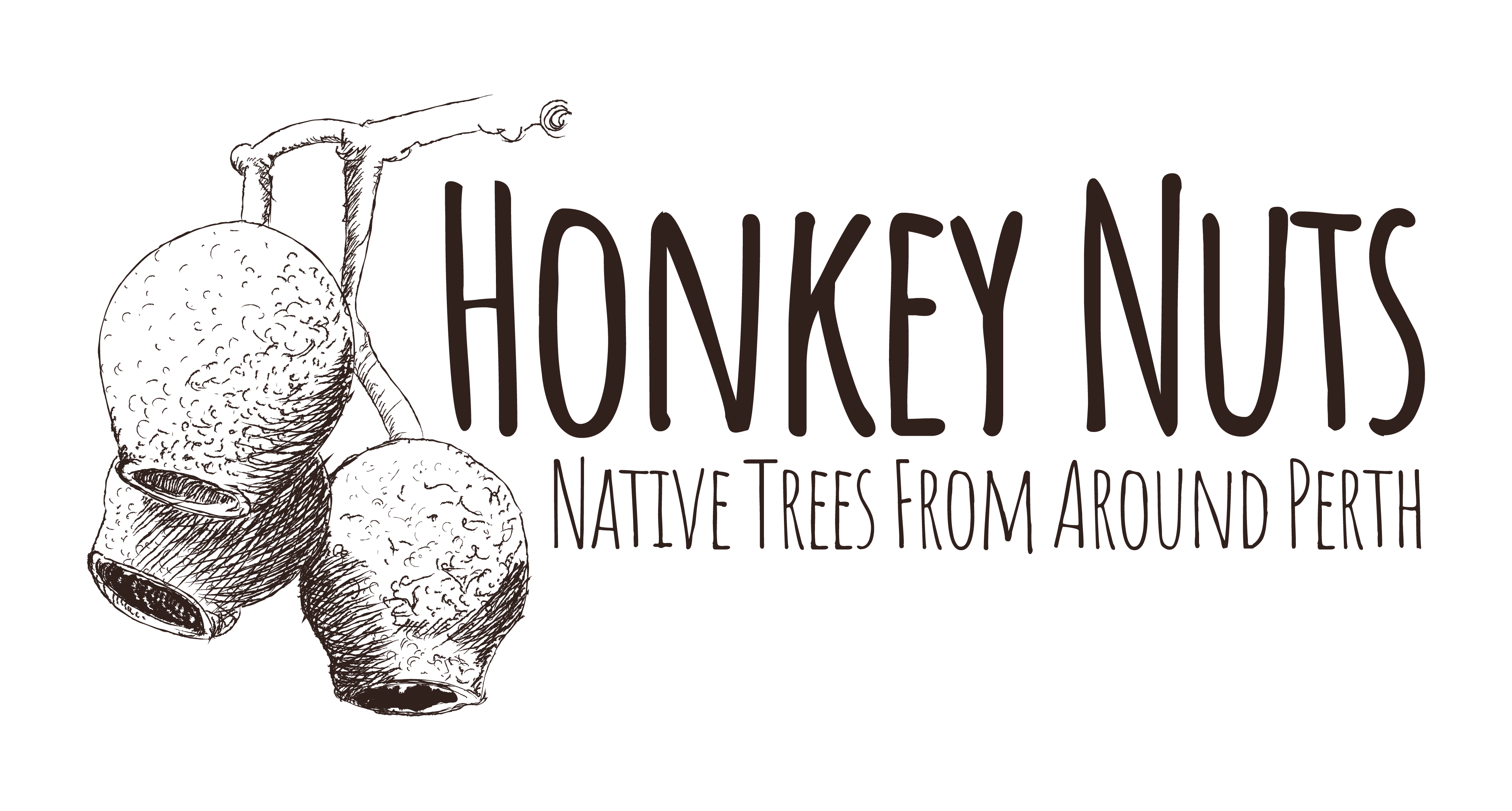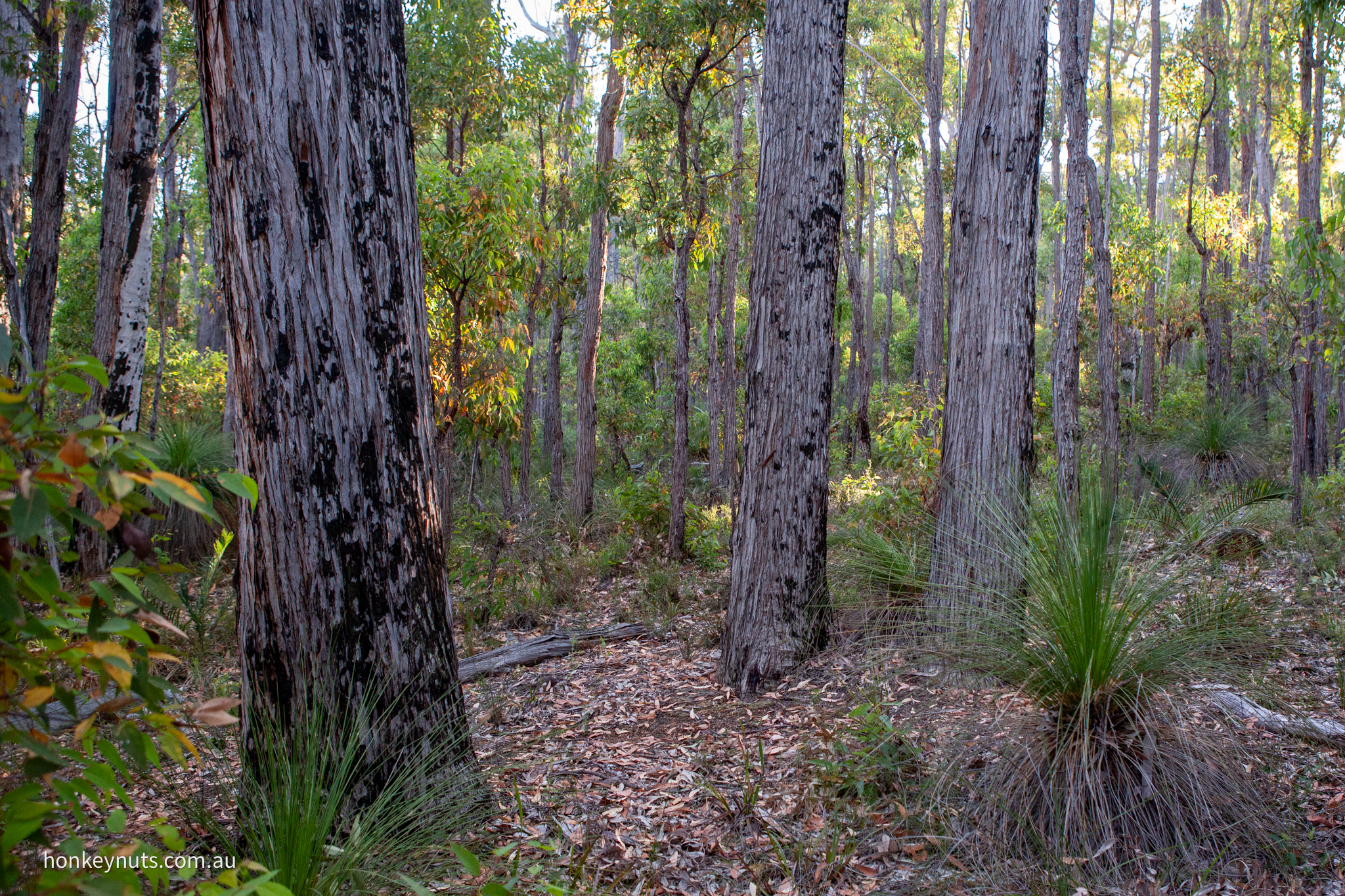Jarrah is an iconic eucalypt of Perth and the south-west. It is a prominent tree on both the Darling plateau, where it is a medium to large tree, and on the coastal plain, where it is smaller and more branching. Its hardy reddish timber has been used extensively in construction and furniture-making. Jarrah flowers in spring and early summer. Its honey has high antimicrobial activity. The species name is from the Latin – marginatus “having a border” and refers to the thickened border of the leaves. Three subspecies are now recognised.
Much of the Jarrah on the Darling plateau is affected by Phytophthora cinnamomi Dieback. This is a water and soil-borne mould which enters the roots, restricting their ability to take up water and nutrients from the soil and their movement to the crown. Jarrah and other vulnerable species consequently “die back” from the top. To reduce the spread of Dieback, many forest roads and tracks are closed to vehicles. The pathogen can be suppressed, but not eradicated, by the application of phosphite, a fungicide.
Ref:
“Leaf and branch: trees and tall shrubs of Perth” by Robert Powell. Published by the Western Australian Department of Environment and Conservation, 2009.
“Eucalypts of Western Australia. The south-west coast and ranges.” Second edition. By Malcolm French and Dean Nicolle. 2024.
Department of Biodiversity, Conservation and Attractions dbca.wa.gov.au February 2023.
“How to do it in the garden” by Sabrina Hahn. Published by Fremantle Press 2024.

